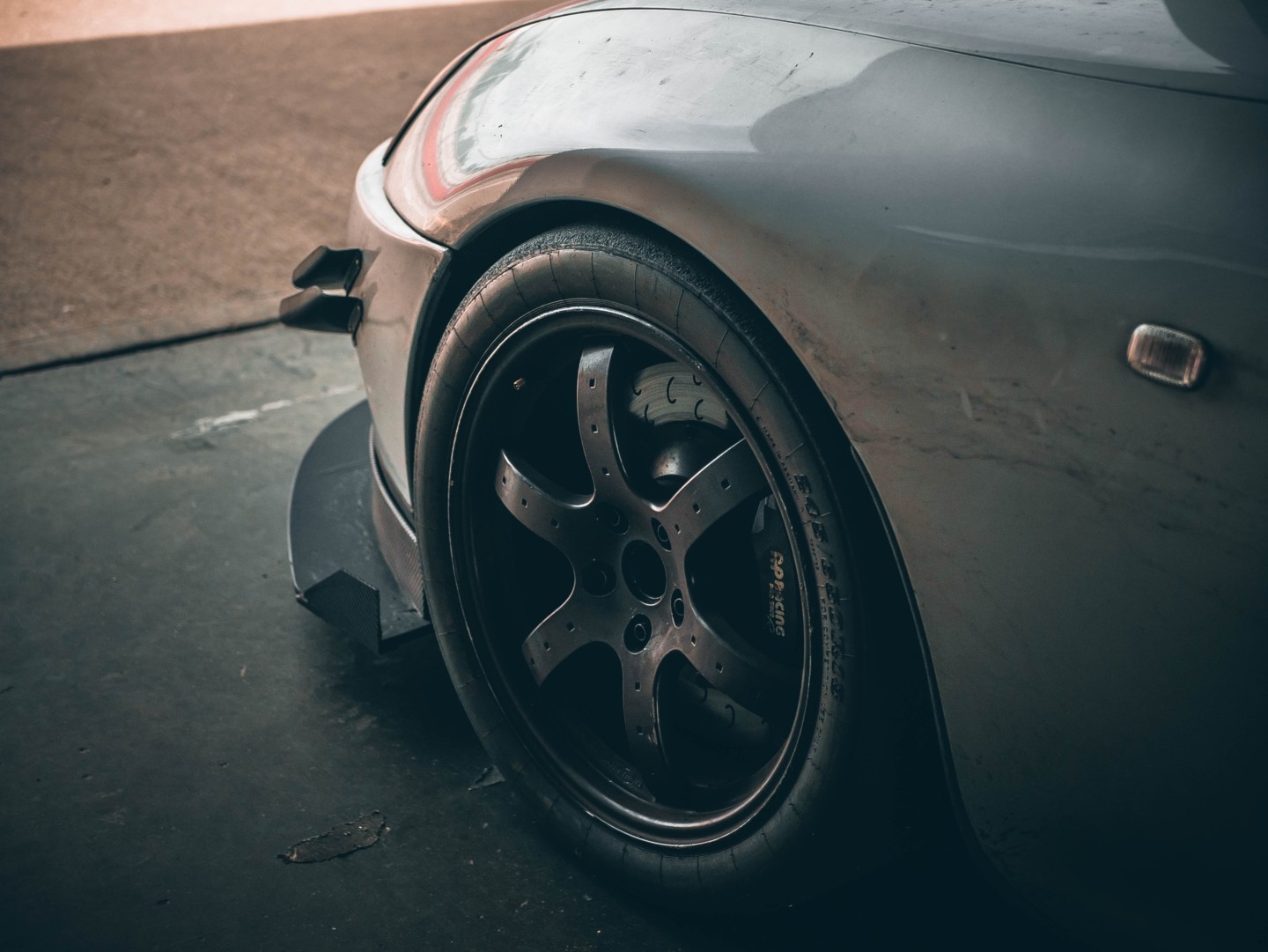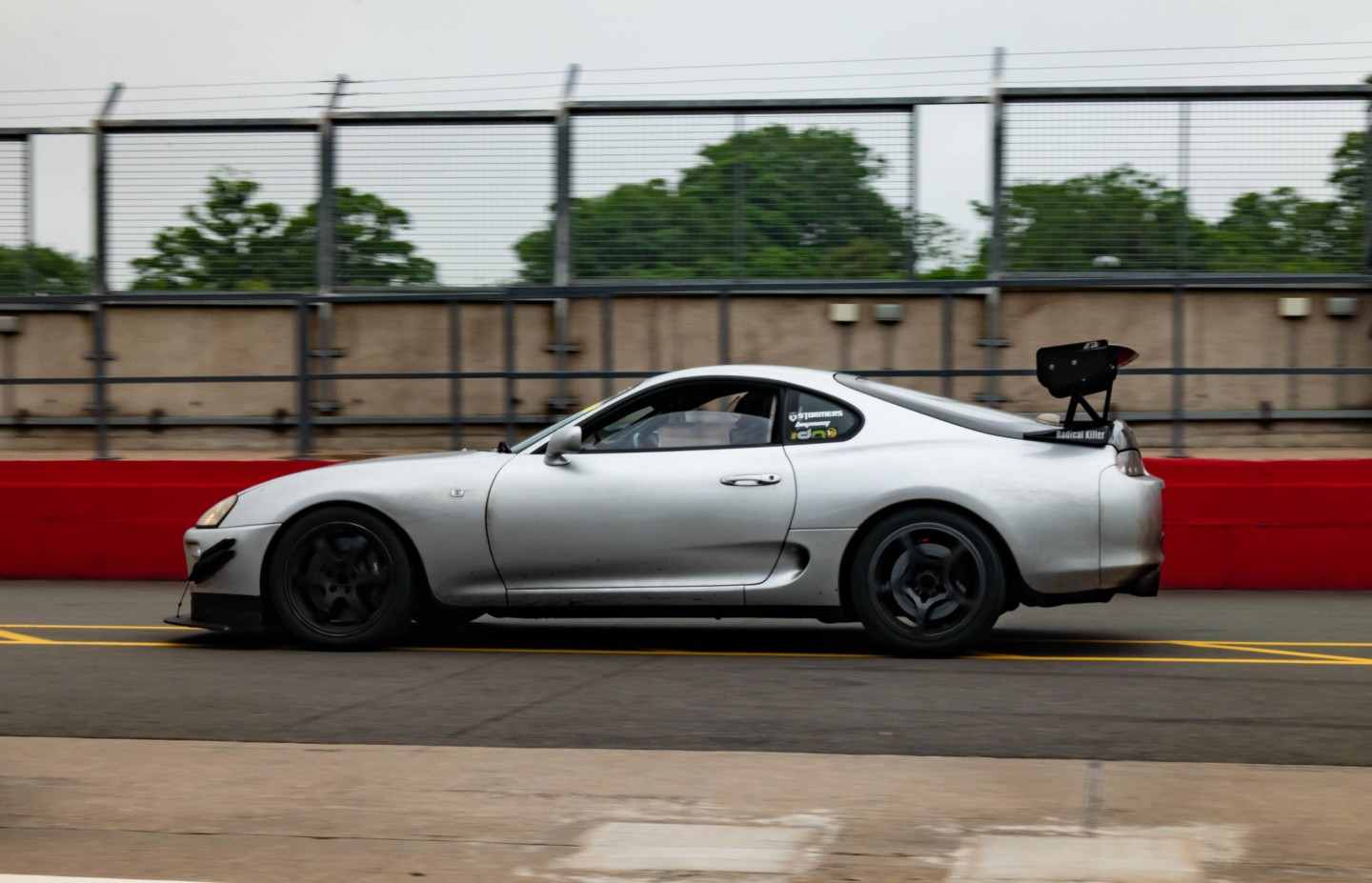There aren’t too many courses like Cadwell Park anymore. Located in Lincolnshire, the unusually narrow track is filled with elevation changes and off-camber corners. In many ways, it resembles a country road. Combine those hills and with worryingly little runoff area, and you realize why precision is paramount here. So, how does a 3,100-pound Toyota Supra manage to match a supercharged Lotus Elise around this style of track?
Since the straighter sections at Cadwell Park are generally short and the prevalence of hairpins and chicanes limit how much horsepower is usable, Simon’s power advantage isn’t what keeps the two so close together. Besides, as the two drivers are friends, Simon was short-shifting to keep some space between them.
What we’re interested in here is the Supra’s low-speed manners and if tire size and suspension settings can compensate for heft and a less-than-ideal weight balance.
Precision or Reassurance
Simon Hart’s Supra might take a bit longer to slow than Ian Howell’s nearly-2,000-pound Elise, but its cornering speeds are surprisingly similar, at least around most of the bends here. However, while the Supra needs to be wrestled with to get the same speeds through the tighter corners, the agile Elise is telepathic; the slightest tug of the wheel results in a major direction change. Note the way it edges into oversteer with little effort (1:16). Bearing in mind, the used Avon ZZR tires it’s running on, the Lotus is clearly the sharper scalpel here.
Perhaps that agility, which borders on nervousness, hinders Ian’s progression through the few faster corners, where, by comparison, Simon looks comfortable leaning on his encouraging Supra. Even the faster corners are a little too slow to utilize much of the Supra’s aerodynamic grip, but lots of camber, Ikeya Formula arms, a Tomei 2-way differential, and Nitron NTR coilovers (which happen to be the same coilovers on the Elise) provide enough poise to carve the ideal line. All those who criticize the Supra of being a barge only good for straight lines should witness one with the right sort of footwork.

Simon knows where to source his go-fast goodies; both the brakes and the tires are from a British Touring Car.
Differences in Power and Delivery
Interestingly, the two perform similarly when leaving short corners and running down short straights. The tractable 2ZZ engine in the Elise may only make 240 horsepower, but the instant torque of the supercharger and the mid-engine traction means that power is usable right here, right now.
While the Supra’s 2JZ may send 700 horsepower back towards massive slicks, the delivery isn’t as immediate nor as easy to administer in Second-gear corners. Truly, the powerful Supra, clad with wings, splitters, and an undertray, is optimized for fast tracks like Silverstone and the Nurburgring.

APR rear wing, homemade front splitter, undertray, and carbon front canards make this car very capable at higher speeds.
Nevertheless, the right suspension modifications and a levelheaded, accurate driver can compensate for nearly 1,100 pounds in difference. While these two are obviously running at a more comfortable pace and having fun, they are pushing hard enough to demonstrate their cars’ capabilities in the tightest parts of Cadwell, which truly resemble a real-world country road. Take that as you will.
While the lightly modified Elise can navigate Cadwell’s corners deftly, the fully tuned Supra is the faster car over one lap. Since the cornering speeds were comparable, it’s having three times the power and an aerodynamic shape which get the Supra around one lap some six seconds faster.






















